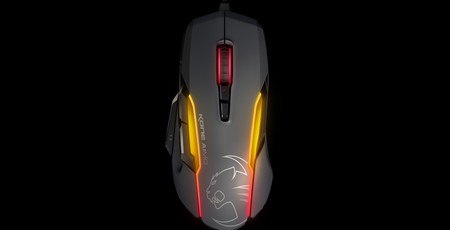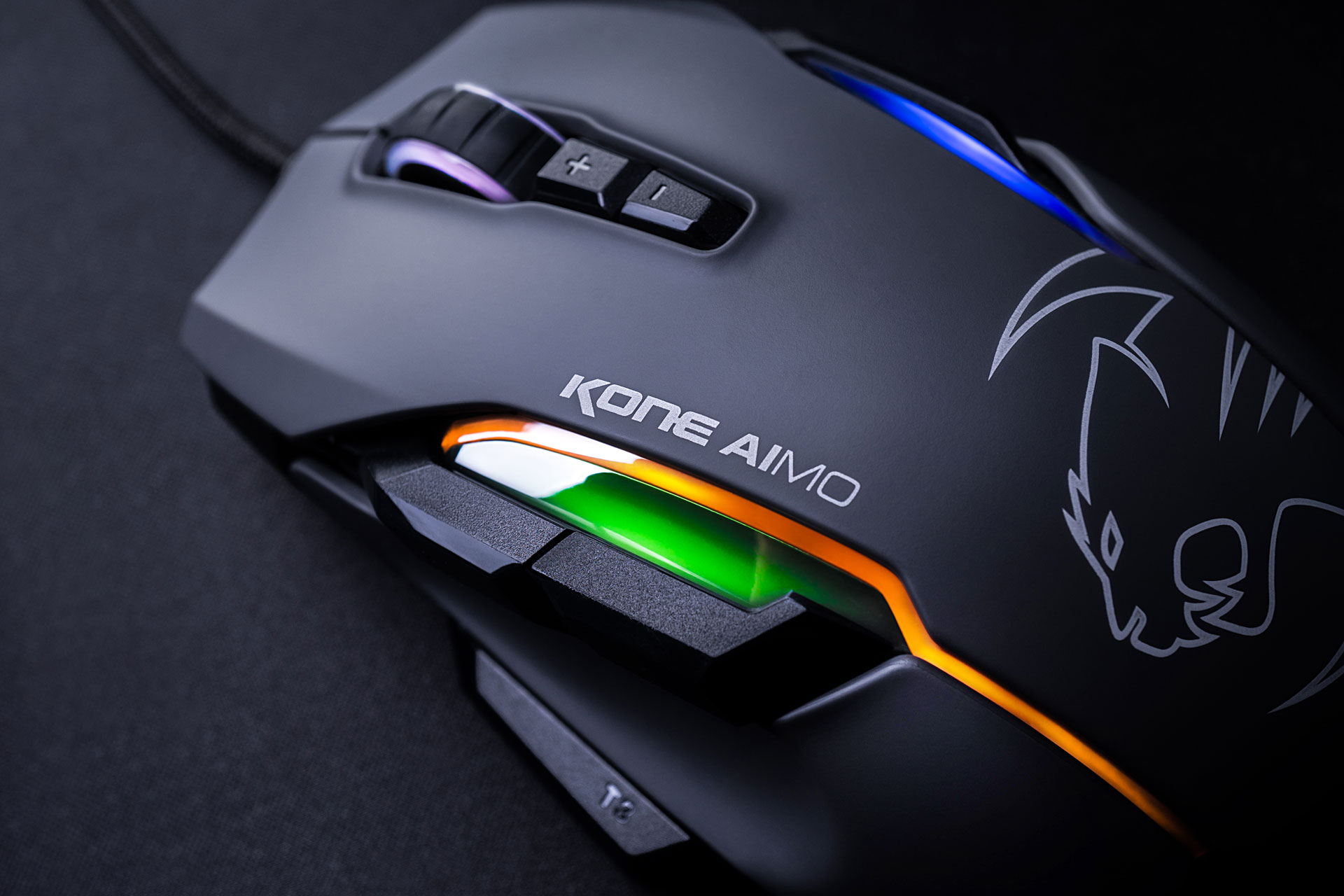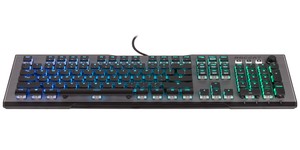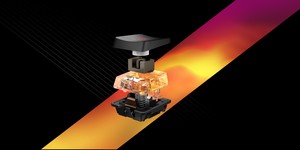
Manufacturer: Roccat
UK price (as reviewed): £69.98 (inc. VAT)
US price (as reviewed): $79.99 (exc. tax)
Given the PC market’s current obsession with RGB lighting, it’s unsurprising to see a gentle reminder from Roccat that it was responsible for the introduction of it to peripherals (pitchforks at the ready!) 10 years ago when it launched the original Kone mouse. Since then, it’s been a staple of the company’s lineup and has seen numerous iterations and accompanying feature bumps, and it’s actually been five years since we reviewed one, so we were curious to discover what the latest one, the Kone Aimo, was bringing to the table. Aimo is the name of Roccat’s new RGB lighting ecosystem that’s designed to automatically configure itself and adapt to your behaviour over time. We suspect ‘Aimo’ will become common parlance in the world of Roccat as more peripherals are added to the ecosystem, but the Kone Aimo is the first one to implement it.


The Kone Aimo is available in three colour options: black, grey, and white, which affects the bulk of the body. Said body is very large, and this is easily one of the bigger mice on the market, but that has always been the case with the Kone family. It’s also pretty heavy at 130g. I found it to be best suited to a palm grip, and thankfully the various contours make this a comfortable and natural fit for right hands (I wouldn’t want it any bigger, though), but a claw grip is also possible. The mouse is plastic-heavy, not using any rubber on the sides, which is a shame, especially on the right where your ring and pinky are left without any real support.
The two main clickers have mild contours to keep your fingers in place and sit atop Omron switches rated to 50 million clicks. Now a fairly standard inclusion for mice in this price bracket, they feel crisp and precise as usual.


Roccat includes back and forward thumb buttons above where your thumb rests, and they’re large and obvious enough to be easy to distinguish and actuate. The main feature of the thumb zone, however, is the large third button below where your digit sits. Designed so that you can roll down onto it for quick and easy actuation, this button has Roccat’s Easy-Shift+ function assigned to it by default, which essentially makes it act like a Shift or FN key from a keyboard, granting every other key a secondary function while it is held down. For example, the scroll up and down functions will change system volume instead of scrolling a page when it’s depressed. It’s a powerful feature, albeit one that we’ve seen before, and thankfully the button isn’t so easy to press that you accidentally hit it without meaning to.

The scroll wheel is described as 4D by Roccat, sadly not for its ability to travel along the dimension of time but instead for the fact that it can move in four directions (five technically, but hey), since as well as the usual scroll up/down and click functions, you can tilt it left and right as well. I found it to be very intuitive, by which I mean that I could control the tilt easily with both my index and middle finger without incurring accidental scrolls or clicks. As such, it could easily become a powerful addition to your gaming or productivity since the feature adds two easily accessible and customisable functions right at your fingertips. The wheel itself is rubberised for grip and has high resistance and very obvious notches for each step, a choice that suits the large dimensions and hefty weight.

Behind the scroll wheel is a pair of buttons that are bound to DPI up and down by default. The furthest back one is a little hard to reach quickly, but otherwise we can’t complain.
The Kone Aimo is equipped with Roccat’s Owl-Eye sensor, which is a modified PixArt PMW 3361 (itself a version of the PMW 3360). This well respected optical sensor is capable of tracking up to a whopping 12,000 DPI. This isn’t as high as some, but we’d argue the difference between 12,000 and 16,000 DPI is utterly meaningless, and even Roccat points out that the sensor is at its best operating between 400 and 3,000 DPI. Nonetheless, you can tweak it in 100 DPI increments from 100 DPI all the way to the maximum.

In our testing, the Kone Aimo handled well, and the sensor didn’t give us any issues. This is what we’ve come to expect of all mice, but it’s still worth testing of course. There is an option to enable angle snapping in the software, but it’s off by default, and the mouse remained free of unwanted movement or jitter, even at the highest DPI settings. Acceleration and deceleration effects are also essentially absent. Meanwhile, for those who like to play at low DPI levels with large sweeping movements, you’ll be pleased to know that the Kone Aimo has an extremely low lift-off distance. Even at a height of one CD (1.2mm), it stopped tracking, so your movements shouldn’t affect your cursor position all that much at all.

There are five RGB lighting zones altogether: the scroll wheel, two thick outer strips in the middle, and two thin inner strips which run from the middle to the back of the body and are multi-LED. The Aimo lighting system is described by Roccat as one that ‘reacts fluidly and organically, and grows based on your gaming behaviour and compatible connected devices’. That’s a roundabout way of saying not very much at all, but essentially the idea appears to be to implement a cross-device spectrum effect that changes colour and speed based on your inputs so you get pleasant rainbow lighting without the need for any fiddly manual configuration. It’s only likely to appeal if you’re happy with multicoloured lighting; thankfully, for those of us that like single or dual-colour effects only, you can easily program these still in software. Regardless of what lighting you have, all lights change to a cool blue whenever Easy-Shift+ is activated. Sadly, there’s no way of indicating DPI by colour, although audio notifications are available. In terms of lighting quality, it’s bright and vivid in all zones, but the scroll wheel’s white lighting was quite off, taking on an obvious pinkish hue.

MSI MPG Velox 100R Chassis Review
October 14 2021 | 15:04








Want to comment? Please log in.